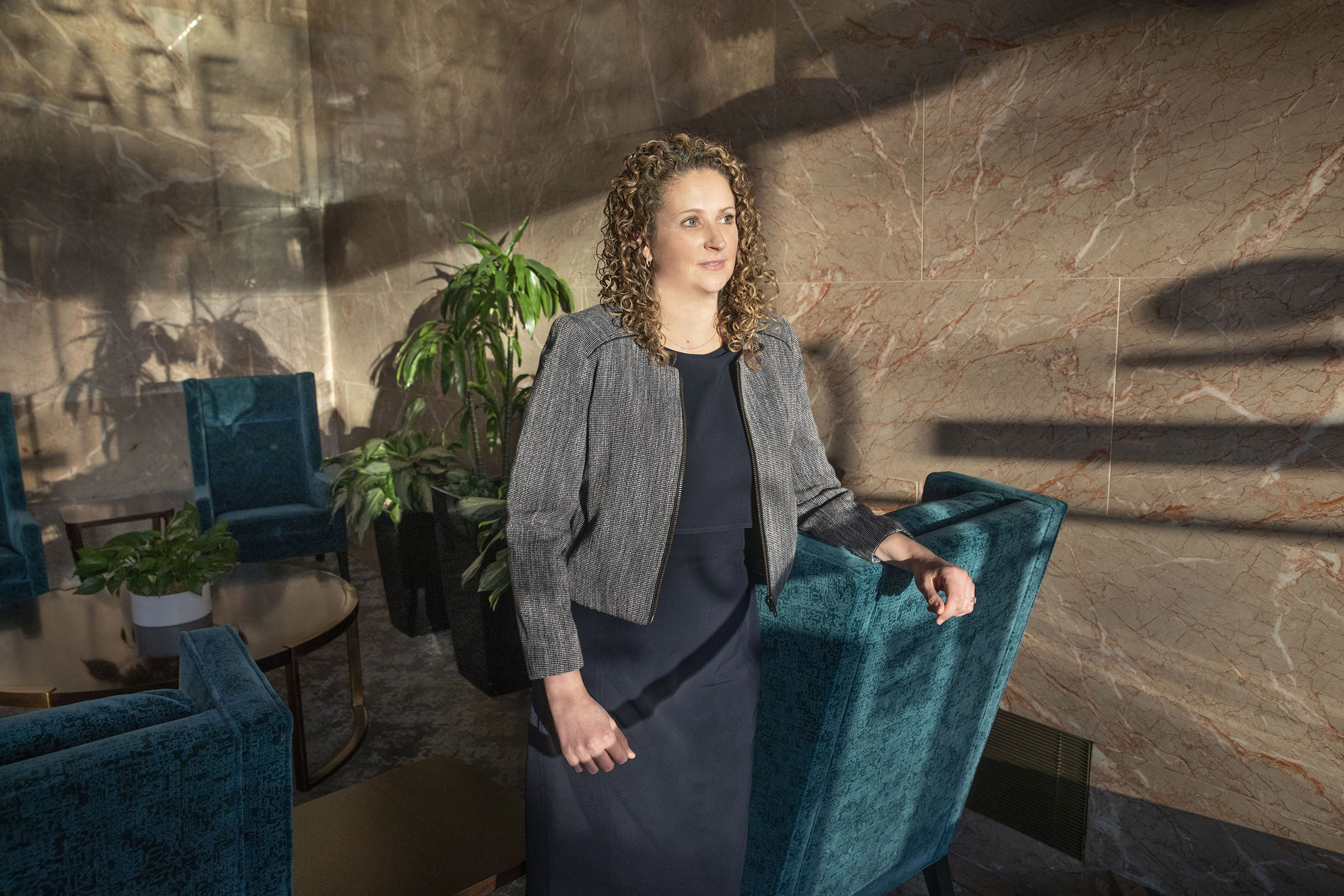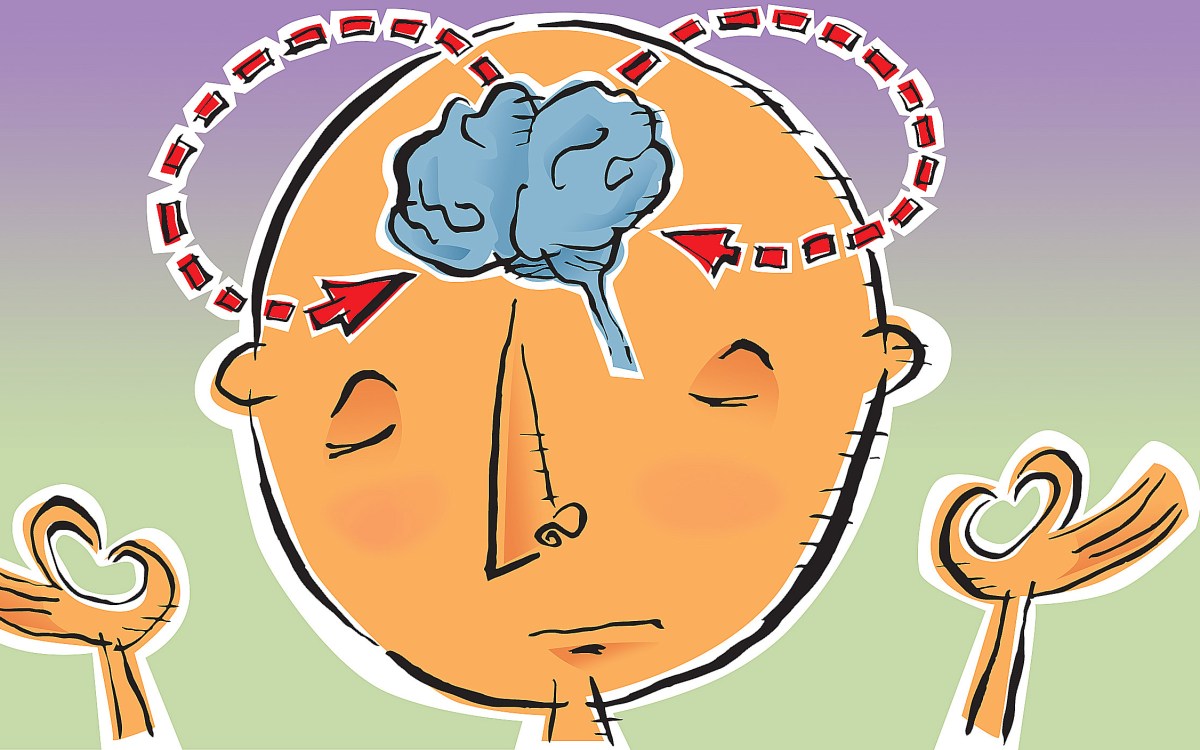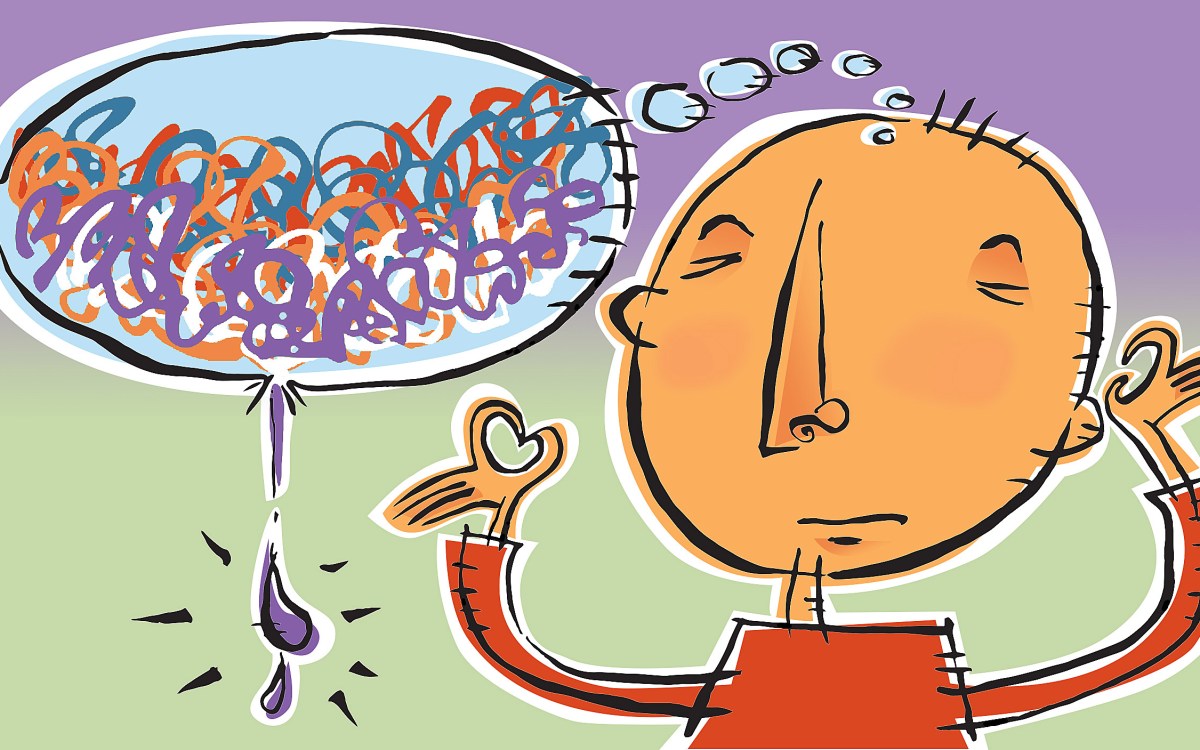
Amanda Baker was part of a research team that studied the effectiveness of mindfulness-based stress reduction.
Kris Snibbe/Harvard Staff Photographer
More mindfulness may be part of the answer for anxiety-ridden U.S.
Researcher hopes findings signal new treatment option amid surge in mental health cases
Research has shown that the U.S. is facing a mental health crisis, with specialists unable to keep pace with a surge in cases during the pandemic. Amanda Baker, an assistant professor of psychology at Harvard Medical School and director of Mass General’s Center for Anxiety and Traumatic Stress Disorders, recently worked with colleagues from New York University and Georgetown to examine one potential response: mindfulness-based stress reduction. The team compared the effectiveness of the intensive intervention with that of the commonly prescribed anxiety drug escitalopram. Participants in the study improved about the same amount after an eight-week course. We spoke with Baker about the research and its implications for treatment of mental health issues. The interview has been edited for clarity and length.
Q&A
Amanda Baker
GAZETTE: How prevalent is anxiety disorder?
BAKER: Anxiety disorders are extremely prevalent. Depending upon the estimate, between 2 percent and 10 percent of the population experiences specific types of anxiety disorders, with 20 percent of the population having any current anxiety disorder diagnosis and nearly a third of the U.S. population experiencing significant anxiety in their lives.
GAZETTE: What treatments do we have for it?
BAKER: We have gold-standard treatments that have been through rigorous studies, both on the medication side — mostly SSRI-type medications — and the therapy side, with things like cognitive behavioral therapy. But there’s a real press on providers these days and those things are hard to gain access to and becoming harder and harder. Symptoms of anxiety and depression increased during the pandemic. Where we would have seen significant symptoms in 30 percent of folks, we’re now seeing them in 40 percent. We’re also getting recommendations to do more screening for depression and anxiety, which is great, but that means there are even more folks screening positive and needing care.
This study came out of all of these pieces. We need more treatments and we need to evaluate whether our treatments are as good as these gold-standard treatments. One area that’s gained a lot of attention is meditation and mindfulness. Some studies have shown that 15 percent of the population has at least dabbled with mindfulness or meditation, and it has been gaining popularity. The approach that we used in the study is mindfulness-based stress reduction (MBSR), which is a specific eight-week intervention.
GAZETTE: What is MBSR?
BAKER: It was developed by Jon Kabat-Zinn at UMass and it’s taken off. It’s an eight-week course, with 2½ hours a week, plus 45 minutes of daily mindfulness homework prescribed — not that everyone does the prescribed amount — and a six-hour retreat at one point within those eight weeks. So, it’s a heavy dose of mindfulness, but it can be rigorously studied and compared to other standard treatments that follow a similar-ish regimen. That includes medication, which often takes about eight weeks to take effect. In this case, we compared escitalopram, the generic of Lexapro, to MBSR.
GAZETTE: What about subclinical anxiety — is that part of this picture as well?
BAKER: It is. A lot of folks experience symptoms of anxiety that don’t necessarily cross the threshold into being a diagnosable anxiety disorder. When something is in what we call a disorder category, it causes a significant amount of distress in daily life and interferes with daily activities: work, socializing, school. But a good chunk of the population experiences anxiety symptoms that might not cross the threshold of interfering with their lives. They’re still able to manage and get things done, but perhaps it’s causing a lot of distress.
GAZETTE: What did you find in the study?
BAKER: We wanted to look at whether MBSR is non-inferior to this gold-standard escitalopram medication. And that’s what the findings show. Clinically, both groups started at what we call a moderate-to-marked — like a moderate-plus — level of anxiety. They decreased to a mild, almost subclinical, level of anxiety. Both groups saw more than a one point drop in our primary outcome measure, a clinically significant amount of change.
GAZETTE: How relevant is this to what you do at the clinic? Is this testing two things that you do all the time?
BAKER: Our prescribers prescribe escitalopram every day, but we don’t provide MBSR in our program because it’s not commonly reimbursed by insurances. So, this is a service that most people have to pay for out of pocket and find a place that’s providing it. One of the benefits of MBSR is that you don’t have to have a clinical degree to be trained in it so many more providers can be trained and deliver this intervention. We hope that this study provides the evidence so insurance companies will reimburse for MBSR, such that we can provide it in our clinic.
GAZETTE: Is this seen as a potential tool for answering unmet mental health needs?
BAKER: Absolutely, but I think more work is needed. This was a rigorous dose of the treatment and it was all in person. We need to know if it’s successful if it is delivered online live, if it is asynchronous, if it is on an app. There are lots of remaining questions. But the findings definitely provide evidence for another option. Right now, we’re strapped in providing what we know is empirically supported. MBSR is another option and opens the door for — hopefully — other mindfulness-based interventions.
GAZETTE: What symptoms should a person look for if they have a sense that they might have a problem?
BAKER: The symptoms are going to differ from one person to the next. For some, there might be physical symptoms: racing heart, sweating, trouble breathing. For others, there might be thoughts or cognitive symptoms, worries — perhaps about the future or ruminations on the past. And then for others, it’s emotional, with a lot of feelings. It takes many different forms — panic, distress — but the question is: Are any of the symptoms highly distressing and interfering with our daily lives? If so, reach out and speak to your primary care doctor or a mental health professional.








